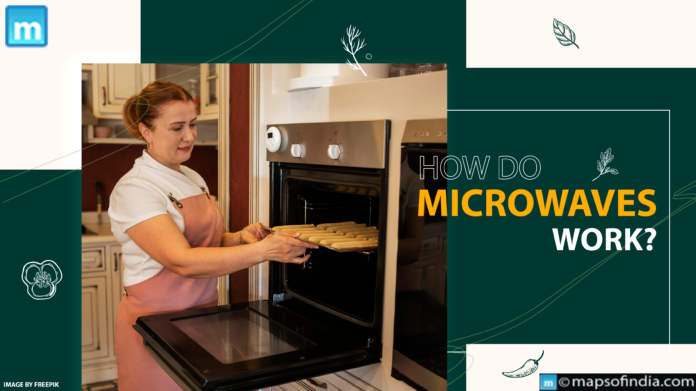Microwaves have become vital equipment in modern kitchens, changing how we cook and reheat meals. But have you ever wondered how these miraculous boxes work and why there’s such a strong warning about placing metal within them? Let’s look at the science behind microwaves to understand better how they work and why certain materials are off limits.
How Do Microwaves Work?
Microwaves use electromagnetic radiation to cook or heat food rapidly and efficiently. Unlike typical ovens that heat food from the outside, microwaves generate electromagnetic waves that permeate the food and force water molecules to vibrate rapidly. This vibration generates heat, which cooks the food evenly and quickly compared to a conventional oven. A magnetron is a mechanism inside the microwave that converts electrical energy into electromagnetic radiation to create microwaves. Microwaves bounce around the oven’s interior, reflecting off the metal walls, until they are absorbed by the food and converted into heat.
Why Can’t We Put Metal in the Microwave?
This is where things get interesting: metal may generate electric currents when subjected to electromagnetic fields and reflect microwaves. When metal objects are placed inside a microwave, the currents can cause sparks, which can start fires and damage the unit. This is because the microwave cavity’s high concentration of electrical energy reacts with the metal, potentially causing arcing and sparking. Metal containers and utensils can also induce “arcing,” in which electrical currents bounce between metal surfaces. This not only creates a safety risk, but it can also harm the microwave’s innards and reduce its functionality.
More Materials to Avoid in the Microwave
-
Plastic not labeled “microwave-safe”
When subjected to high heat, some polymers melt or emit dangerous compounds. Use only microwave-safe containers and wrappers composed of materials that can tolerate heat without contaminating your food.
-
Styrofoam
Although useful for takeout containers, styrofoam can melt or warp in the microwave, contaminating your food with potentially dangerous chemicals. Choose microwave-safe alternatives or place your meal on a microwave-safe plate before reheating.
-
Paper bags and newspapers
They might catch fire when exposed to the microwave’s intense heat. Use paper towels or microwave-safe parchment paper to cover food.
-
Metal-trimmed dishes or containers
Even if most of the container is microwave-safe, metal accents or trimmings can still cause sparking and arcing. Always check for any metal components before microwaving.
Right Materials For Microwave
There are several safe alternatives, both cooking and reheating foods. The following materials are microwave-safe:
-
Glass
Heat-resistant glass plates and containers are ideal for microwave cooking. They allow microwaves to pass through without disrupting the heating process.
-
Ceramics
Most ceramic dishes and cookware are microwave-safe if they do not have metallic decorations or glazes containing lead or other metal.
-
Plastic
Look for microwave-safe containers, often comprised of polypropylene, polyethylene, or other microwave-friendly plastics. Avoid using outdated or damaged plastic containers since they might emit dangerous chemicals when heated.





